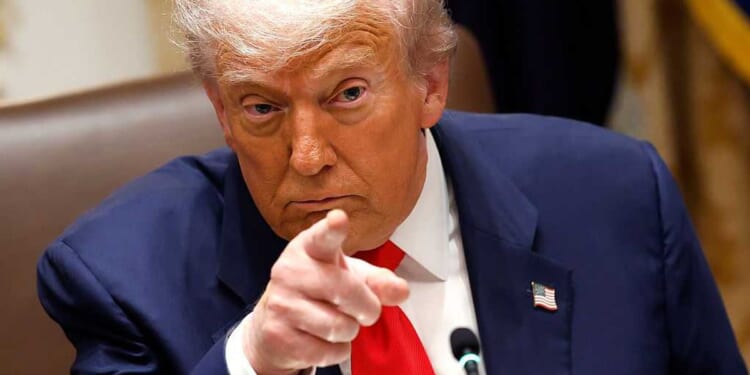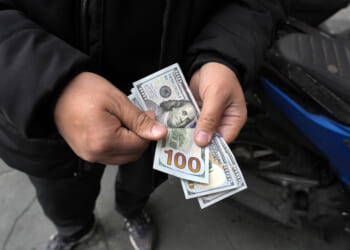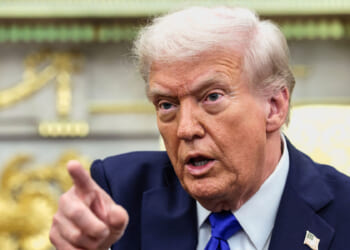The U.S. Supreme Court heard oral arguments on Wednesday regarding President Donald Trump’s authority to impose reciprocal and fentanyl-related tariffs under the International Emergency Economic Powers Act. Given the skepticism expressed by liberal and conservative justices alike, there is cause to suspect that things may not go in the president’s favor.
Trump has since underscored in a series of posts on Truth Social that a loss for his administration in this case would prove to be a “catastrophe” for the economy and national security.
Skepticism on the high court
One day prior to the Supreme Court hearing oral arguments in the consolidated cases Trump v. V.O.S. Selections and Learning Resources, Inc. v. Trump, the president noted that the outcome of the case could mean “LIFE OR DEATH for our Country. With a Victory, we have tremendous, but fair, Financial and National Security. Without it, we are virtually defenseless against other Countries who have, for years, taken advantage of us.”
‘The US Supreme Court was given the wrong numbers.’
While Justice Samuel Alito appeared sympathetic to some of the government’s arguments, his conservative colleagues didn’t come across as entirely convinced.
Justice Neil Gorsuch, for instance, joined his liberal colleagues last week in trying to poke holes in U.S. Solicitor General D. John Sauer’s defense of Trump’s tariffs, suggesting that the danger of too liberal a reading of the IEEPA in the president’s favor risks creating “a one-way ratchet toward the gradual but continual accretion of power in the executive branch and away from the people’s elected representatives.”
RELATED: Trump’s SHOCKING 25% truck tariff: A matter of national security?

Chief Justice John Roberts, like some of the other justices on the high court, took issue with the absence of the word “tariffs” in the IEEPA, which empowers the president to regulate imports of “property in which any foreign country or a national thereof has any interest” during a declared national emergency.
“You have a claimed source in IEEPA that had never before been used to justify tariffs. No one has argued that it does until this — this particular case,” said Robert.
Roberts, whose note on the unprecedented nature of the interpretation was also raised by Justice Amy Coney Barrett, added that tariffs amount to an “imposition of taxes on Americans, and that has always been the core power of Congress.”
Concern in the White House
Trump, no doubt aware of how the oral arguments went, has emphasized in the days since what is at risk.
Hours after indicating that any money left over from his proposed $2,000 tariff dividend for American citizens “will be used to SUBSTANTIALLY PAY DOWN NATIONAL DEBT,” Trump suggested on Monday that the cost of the Supreme Court’s invalidation of his tariffs — which Barrett said would likely be “a mess” — could be far higher than previously suggested.
Trump noted in a Truth Social post on Monday, “The ‘Pay Back’ Numbers being quoted by the Radical Left Lunatics, who would love to see us lose on Tariffs because of how bad it would be for our Country, are much higher than those being stated by our Fake Opposition — Opposition mainly from Foreign Countries that would do anything to be allowed to charge us Tariffs without retribution.”
‘Possibly non-sustainable!’
“The actual Number we would have to pay back in Tariff Revenue and Investments would be in excess of $2 Trillion Dollars, and that, in itself, would be a National Security catastrophe,” added the president.
In a subsequent post, Trump wrote, “The U.S. Supreme Court was given the wrong numbers. The ‘unwind’ in the event of a negative decision on Tariffs, would be, including investments made, to be made, and return of funds, in excess of 3 Trillion Dollars.”
As all revenues from tariffs, including new and pre-existing ones, through September of this year had raised between $174 and $195 billion, Trump’s allusion to a figure over $3 trillion appears to refer to the potential tariff revenue lost over the next decade.
According to a recent Tax Foundation report, Trump’s tariffs “will raise $2.4 trillion in revenue over the next decade on a conventional basis and reduce US GDP by 0.6 percent, all before foreign retaliation.” Other estimates put potential revenue as high as $3 trillion.
The Congressional Budget Office released an estimate in August indicating that “increases in tariffs implemented during the period from January 6, 2025, to August 19 will decrease primary deficits (which exclude net outlays for interest) by $3.3 trillion if the higher tariffs persist for the 2025-2035 period.”
Trump suggested further that the loss of tariff revenue and return of funds “would truly become an insurmountable National Security Event, and devastating to the future of our Country — Possibly non-sustainable!”
U.S. trade representative Jamieson Greer told “Mornings with Maria” last week that the reciprocal tariffs at issue have netted over $100 billion but less than $200 billion and noted further that if they are invalidated, specific plaintiffs might receive a refund, but it remains unclear what will happen to the remainder.
“As for the rest of it … I’ll hand that file to the secretary of the treasury,” said Greer.
“You’ll have all these importers and importing interests who are going to want that money back, and so, you know, we’ll have to figure out — probably with the court — what kind of a schedule might look like and what the rights are of these parties and what rights the government has to that money.”
Like Blaze News? Bypass the censors, sign up for our newsletters, and get stories like this direct to your inbox. Sign up here!
















